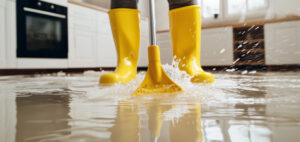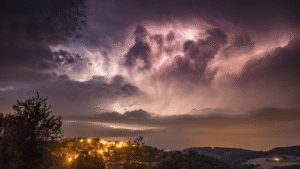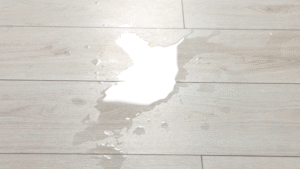Fire damage is often devastating, leaving homes and businesses in ruin. The origin of each fire can often come with additional effects that present unique challenges for fire restoration company Mendocino County. In this blog, we’ll break down each different type of fire and their specific restoration challenges.
Types of Fire Damage
There are five classifications that a fire can be divided into. These classifications are determined based on the fire’s origin and characteristics. They include:
Class A Fire Damage
Class A fires involve ordinary combustibles such as wood, paper, cloth, and certain plastics. These fires are typically caused by mishandled candles, electrical malfunctions, or unattended cooking. The damage often includes charring, smoke residue, and water damage from firefighting efforts.
Restoration Challenges
You should start fire damage restoration as soon as possible. Restoration challenges for class A fire damage include:
Charring and Structural Damage
The primary challenge for a class A fire is dealing with the charring of wood and structural components. This often requires extensive repairs or replacement of damaged materials.
Smoke and Soot Residue
Smoke can penetrate porous materials and leave a lingering odor. Professional cleaning and deodorization are essential to remove all traces of smoke and soot.
Water Damage
Water used to extinguish the fire can cause mold growth if not properly addressed. Immediate water extraction and drying are necessary to prevent further issues.
Class B Fire Damage
Class B fires involve flammable liquids such as gasoline, oil, and alcohol. These fires are often the result of kitchen mishaps or accidents involving flammable materials. The damage can be extensive due to the high burn temperatures and rapid spread of these fires.
Restoration Challenges
Fire damage restoration challenges for class B fire damage include:
Chemical Residues
Flammable liquids leave behind chemical residues that can be harmful if not correctly handled. Specialized cleaning agents are required to neutralize these residues.
Structural Damage
The intense heat can cause significant structural damage, necessitating thorough inspections and repairs.
Smoke Odor
The smoke from flammable liquids has a distinct, persistent odor that requires advanced deodorization techniques.
Class C Fire Damage
Class C fires involve electrical equipment such as appliances, wiring, and circuit breakers. These fires can start from faulty wiring, overloaded circuits, or electrical malfunctions.
Restoration Challenges
Restoration challenges for class C fire damage include:
Electrical Safety
The primary concern is ensuring the property is electrically safe before any restoration work begins. A certified electrician must inspect and repair any damaged wiring prior to restoration, they can also give you tips to help you prevent electrical fires in the future.
Soot and Smoke Damage
Electrical fires produce heavy soot and smoke, which can infiltrate and harm electronic devices and other equipment. Specialized cleaning and restoration of electronics are often necessary.
Class D Fire Damage
Class D fires involve combustible metals like magnesium, sodium, and potassium. These fires are rare in residential settings and more likely to occur in industrial environments.
Restoration Challenges
Restoration challenges for class D fire damage include:
Metal-Specific Extinguishing
Combustible metal fires require specific extinguishing agents not typically found in standard fire extinguishers. Incorrect handling can exacerbate the fire.
Specialized Cleanup
The residues from metal fires can be highly reactive and require careful, specialized cleanup methods.
Health Hazards
These fires can release toxic fumes, making it essential to use appropriate protective equipment during cleanup and restoration.
Class K Fire Damage
Class K fires are specific to cooking oils and fats, typically occurring in commercial kitchens but possible in residential settings as well. These fires can escalate quickly due to the high burn temperatures and flammability of cooking oils.
Restoration Challenges
Restoration challenges for class K fire damage include:
Grease Residue
Cooking oil fires leave behind stubborn grease residue that is difficult to remove with standard cleaning methods.
Odor Removal
The smell of burnt cooking oils can permeate the entire property, requiring thorough deodorization.
Fire Suppression Systems
Commercial kitchens often have fire suppression systems that deploy chemicals to extinguish fires. Cleaning up these chemicals and ensuring the system is recharged and functional is a critical part of the restoration process.
Professional Restoration Process
Regardless of the type of fire damage, the restoration process performed by a fire restoration company in Mendocino County generally follows a series of steps to ensure the property is safely and effectively restored.
Assessment and Inspection
A thorough inspection of the property is conducted to assess the extent of the damage. This includes identifying the type of fire, the areas affected, and the specific restoration needs. A detailed plan is then developed to address all aspects of the damage.
Securing the Property
To prevent further damage and ensure safety, the property is secured. This may involve boarding up windows, covering roofs, and securing any structural elements that could pose a hazard.
Water Extraction and Drying
If water was used to extinguish the fire, it is crucial to remove any standing water and thoroughly dry the affected areas to prevent mold growth and additional damage.
Smoke and Soot Removal
Smoke and soot can penetrate various materials and surfaces, leaving behind a residue that needs to be meticulously cleaned. Specialized equipment and techniques are used to remove smoke and soot from walls, ceilings, floors, and other affected areas.
Deodorization
Smoke odors can linger long after the fire is extinguished. In the smoke odor removal process advanced deodorization techniques, including thermal fogging and ozone treatments, are employed to eliminate these odors.
Cleaning and Sanitizing
The property is cleaned and sanitized to remove any harmful residues and contaminants. This includes cleaning furniture, personal belongings, and other contents of the property.
Repair and Restoration
The final step involves repairing and restoring the property to its pre-fire condition. This can include rebuilding damaged structures, repainting, and replacing flooring and fixtures.
Your Fire Restoration Specialists – West Coast Fire & Water
Has your property in Mendocino County suffered from fire damage? Contact West Coast Fire & Water. Our team of experienced professionals is dedicated to providing high-quality, compassionate service to help you navigate the aftermath of a fire. If you’re facing fire damage, call West Coast Fire & Water at 707-462-5326 for a thorough assessment.



